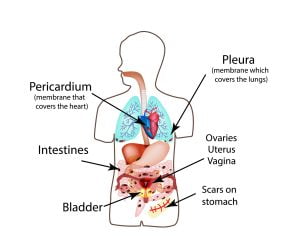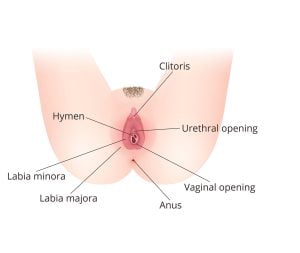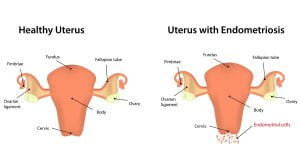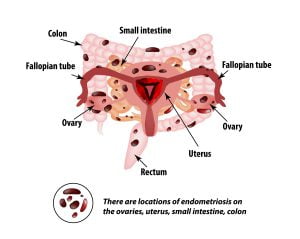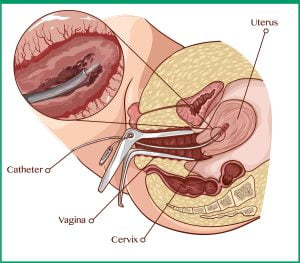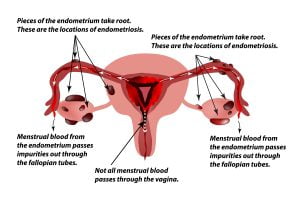Browsing: Endometriosis Graphics
Comprehensive Information, Resources, and Support on Endometriosis
Sometimes, endometriosis can occur in organs other than the pelvic cavity. Although very rare, endometriosis can even invade other vital organs and structures such as the kidneys, eyes, liver, pancreas, brain, bone, heart, skin, and nasal cavity, etc.
The female reproductive system is quite complicated but fascinating. It has the capability to function with almost every other body system for the purpose of reproduction. The female reproductive organs can be subdivided into the internal and external genitalia (as showsn in the image).
Endometriosis is the growth of tissue that is normally found in the lining of the uterus in a location outside of the uterine cavity. It can occur on the ovaries, on surface of the uterus, on the intestine, or in other organs. Endometriosis is estimated to affect between 3% and 10% of reproductive-aged women. A healthy uterus functions to nourish a fetus until it’s ready for birth while a uterus with endometriosis leads to impaired fertility and ovarian cancer (if not treated).
Endometriosis lesions can be found anywhere in the pelvic cavity such as on the ovaries, fallopian tubes, pelvic side-wall (called peritoneum), uterosacral ligaments, the cul-de-sac, the Pouch of Douglas, etc.
The doctor uses a speculum to open the vaginal canal and visualize the cervix, opening to the uterus, and other organs. In an endometrial biopsy, the doctor inserts a thin tubular device through the cervix into the uterus to remove a tiny piece of the inner uterus lining tissue for investigation.
Endometriosis is an often painful disorder in which tissue that normally lines the inside of your uterus (called the endometrium) grows outside your uterus. This leads to a chronic inflammatory reaction that may result in scar tissue which might grow on the surfaces of organs in the pelvic and abdominal areas. The symptoms of endometriosis include painful periods, painful ovulation, pain during or after sexual intercourse, heavy bleeding, chronic pelvic pain, fatigue, and infertility.
ADVERTISEMENT




